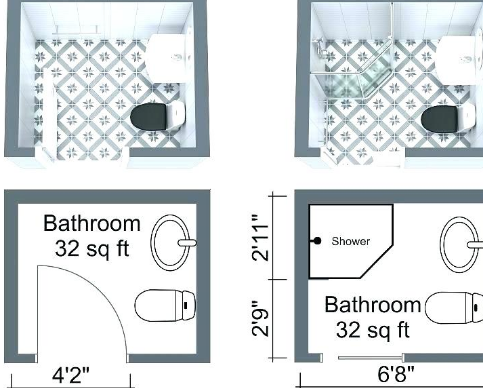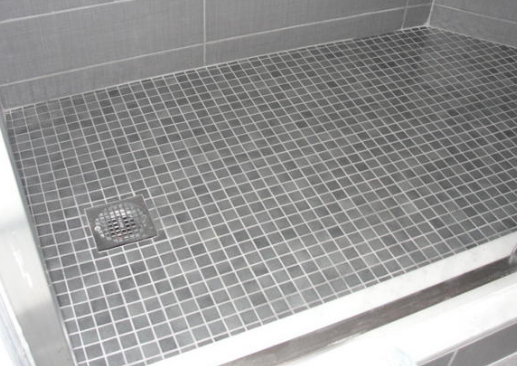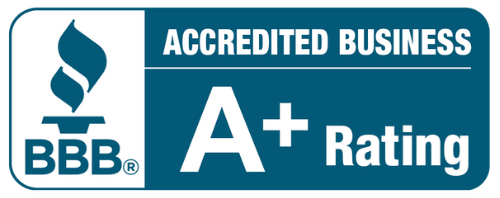
The recommended minimum slope for a shower drain is 4%, which means that the floor level drops .5 inches for every 12 inches of flooring toward the drain. If you have a shower that is three feet by three feet, this means that the edges of the shower basin near the wall will be 1.5 inches higher than the floor near the drain.
Slope is created at the cement stage. This means if a shower slope is installed incorrectly, it often has to be restarted from the very beginning. We recommend talking with a professional plumber or bathroom remodeler if you need help sloping your shower.

To form this important seal, the pipe needs exact venting to create air pressure. Be sure to follow the instructions to the letter when installing drain pipes underneath your sink, and call a professional plumber if you run into issues or– after installation–smell the distinct odor of sewer gases.

- Talk to your neighbors: Chances are, you aren’t the first homeowner to remodel a bathroom in your neighborhood. Your neighbors will not only have advice for you, but will also be able to point you in the direction of local professionals they trust–and those they warn you to stay away from.
- Read reviews: Online reviews can tell you a lot about a plumber. Don’t just look at the star rating. Get into content of the review and learn why people liked, or disliked, that professional. Zero in on plumbers who stand by their word and did right by homeowners.
- Research: Find plumbers who specialize in plumbing installation and bathroom remodeling work. Give them a call and tell them about their project. If you’re lucky, they’ll have experience working in similar situations and know just what to do.


